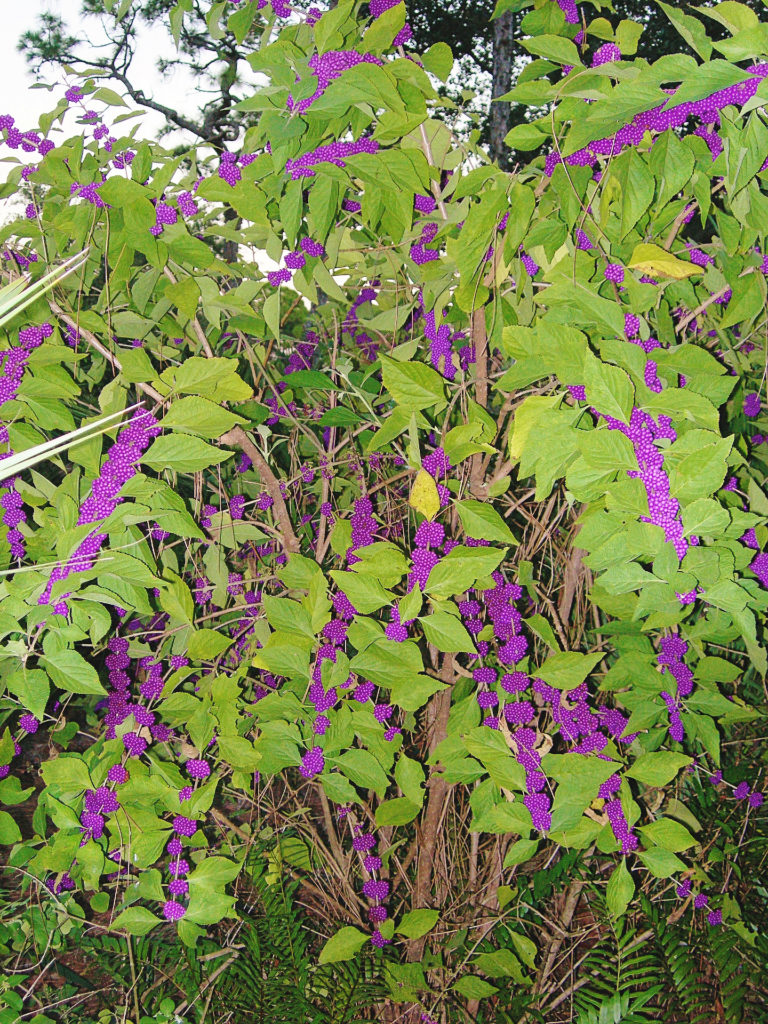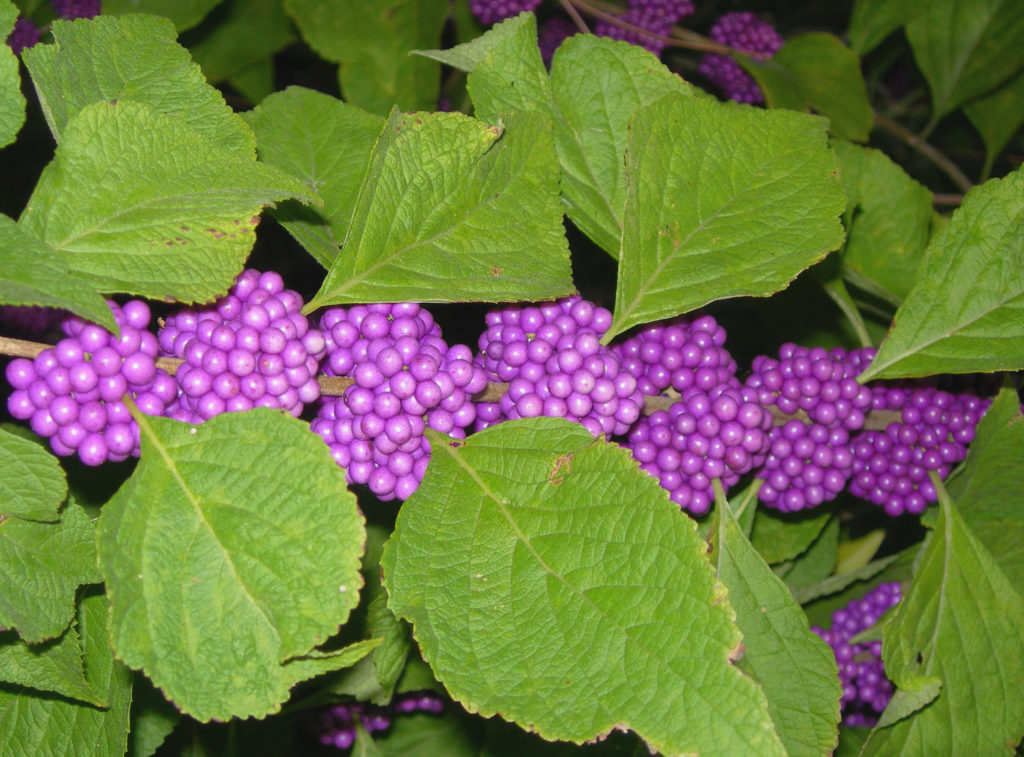
Q: What is the plant I see with the purple berries in clusters? The berries were around the plant stems in groups. I saw the plant on a walk in the woods near my house. Will it grow in my landscape? Can I dig some up and transplant it?
Mark, Port St. Lucie, FL
A: The only plant I know that grows in woods or natural areas in Florida with purple fruit in the fall and winter held in clusters around the branch stems is American Beautyberry, known as Callicarpa americana to scientists and horticulturists.
Beautyberry is found throughout the southeastern United States, including Florida, from the Panhandle to the Keys. It is also found in the Caribbean and Mexico. It grows in forested areas and disturbed locations along fences and at the edges of natural areas. It prefers moist, open spaces like in pine habitats but will grow in drier places.
Various indigenous peoples and early settlers have long used this plant for medicinal properties and for mosquito repellant. Farmers often crushed the leaves and placed them under saddles to ward off the biting hordes. Recent research has found the leaves of Beautyberry do indeed harbor an effective mosquito repellant.

This shrub with an open, loose habit is classified in the mint family. Is a perennial that loses its leaves in the dry season and grows 4 to 8 feet wide and tall. The oval leaves are held across from one another, sometimes with hairs, and have a saw-tooth margin.
The flowers are produced in the spring and summer in groups around the stems between the leaves. They are pale pink or violet and not showy. The fruit which follows the flowers are small berries and are often vivid purple or blue, though there are selections with white berries.
The berries of Beautyberry ripen in the fall. The lovely, bright purple fruit rings around the stems are beautiful in the landscape and natural areas. Many wildlife species are fond of Beautyberries. Watch for visits from mockingbirds, bobwhite, quail, and opossums, raccoons, and gray squirrels. The berries make great jelly for humans!
Due to the open habit of Beautyberry, it is best planted in less formal landscapes as it does not take to shearing. It is lovely in borders and barriers and in containers. It is a must-have addition to wildlife-friendly landscapes.
It is not a good idea to dig up and remove plants from native areas. There is no telling the amount of harm removing plants from natural habitats can cause, and it may be illegal. Occasionally, when a spot of land is to be developed, relocating plants in harm’s way is good. Granny Cloud would sometimes put a ground or air layer on a plant, but she said only one so as not to stress the plant, and of course, permission from the landowner was and is necessary.
Find your very own Beautyberry at locally owned nurseries and garden centers. It is easily obtained in those which specialize in native and low-maintenance selections.
This article first appeared in the Treasure Coast Newspapers.
Leave a Reply